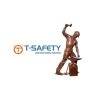Working on a construction site exposes workers to various safety hazards and the risk of serious injuries. To mitigate these risks, the presence of essential safety accessories and gear is paramount. Among them, the construction safety harness stands out as one of the most commonly used and relied upon by construction workers. While there may be concerns about its effectiveness and occasional incidents, the overall benefits make it an indispensable accessory, especially when equipped with a high-quality work harness suitable for heavy-duty environments.
A safety harness is specifically designed to ensure your safety when working at heights. Workers who face fall hazards are legally obligated to wear safety harnesses as mandated by their employers. However, there are numerous instances where it is advisable for individuals to wear them regardless of legal requirements.
The Importance of Safety Harnesses for Construction Workers
Safety should be the top priority when working with construction equipment, and safety harnesses play a vital role on any construction site. This significance becomes even more pronounced when working on high-rise buildings or structures above ground level.
Construction work entails numerous hazards that can lead to injuries or even fatalities. Wearing safety harnesses is crucial for several reasons. Firstly, they provide support and prevent falls from heights. If an accident occurs, such as falling off a platform or scaffold, the impact upon hitting the ground can cause severe injuries, including broken bones and spinal cord injuries. Wearing a safety harness helps avert such accidents by suspending the body, reducing the distance of the fall and mitigating the severity of potential injuries.
Additionally, safety harnesses aid in maintaining balance while working on elevated structures or in high-rise buildings, reducing the risk of falls. Their importance cannot be overstated, as they serve as a crucial line of defense against the dangers associated with working at heights.
Fall Protection Safety Harnesses for Construction, Roofing, and More
Fall protection harnesses are specifically designed to ensure safety while working at heights, making them essential for industries such as construction and roofing.
Different Types of Safety Harnesses
There are several types of safety harnesses available, including:
1.Safety Straps: These straps encircle the body, typically under the arms or around the waist. They connect to a lanyard that prevents falling in the event of losing footing or encountering unexpected gusts of wind.
2.Lanyards: Lanyards come in various lengths and feature clips at each end that attach to the harness. They can be used independently or connected to additional equipment, such as a rope ladder, to arrest falls before hitting the ground.
3.Impact-Absorbing Devices: Worn on the hip, these devices, such as hammers, help absorb some of the impact during a fall, minimizing the risk of injuries like broken bones or concussions.
Choosing the Right Safety Harness for Elevated Construction Work
Harnesses are invaluable tools for ensuring safety when working at heights. They not only facilitate work at elevated levels but also provide protection in the event of accidents or falls. When installing scaffolding, working at heights, or engaging in any task that requires suspension in the air, wearing a safety harness is essential. Harnesses come in various styles, including full body harnesses and waist belt harnesses.
1.Full Body Harnesses: These harnesses offer comprehensive protection, covering the shoulders, abdomen, and thighs. Worn over clothing, they are secured with a locking carabiner through the crotch strap. Full body harnesses are favored by construction workers due to their all-encompassing protection and long-term comfort.
2.Waist Belt Harnesses: Designed to safeguard the lower body, including the hips, pelvis, and upper thighs, waist belt harnesses do not extend across the chest like full body harnesses. They are typically worn without clothing underneath to avoid interference with tools carried on belts or in pockets.
Investing in the right safety harness ensures the well-being of construction workers, allowing them to carry out their tasks confidently and securely, even in challenging work environments.
Remember, when it comes to construction site safety, wearing the appropriate safety harness is not just a legal requirement but a crucial step towards preventing accidents and protecting lives.

